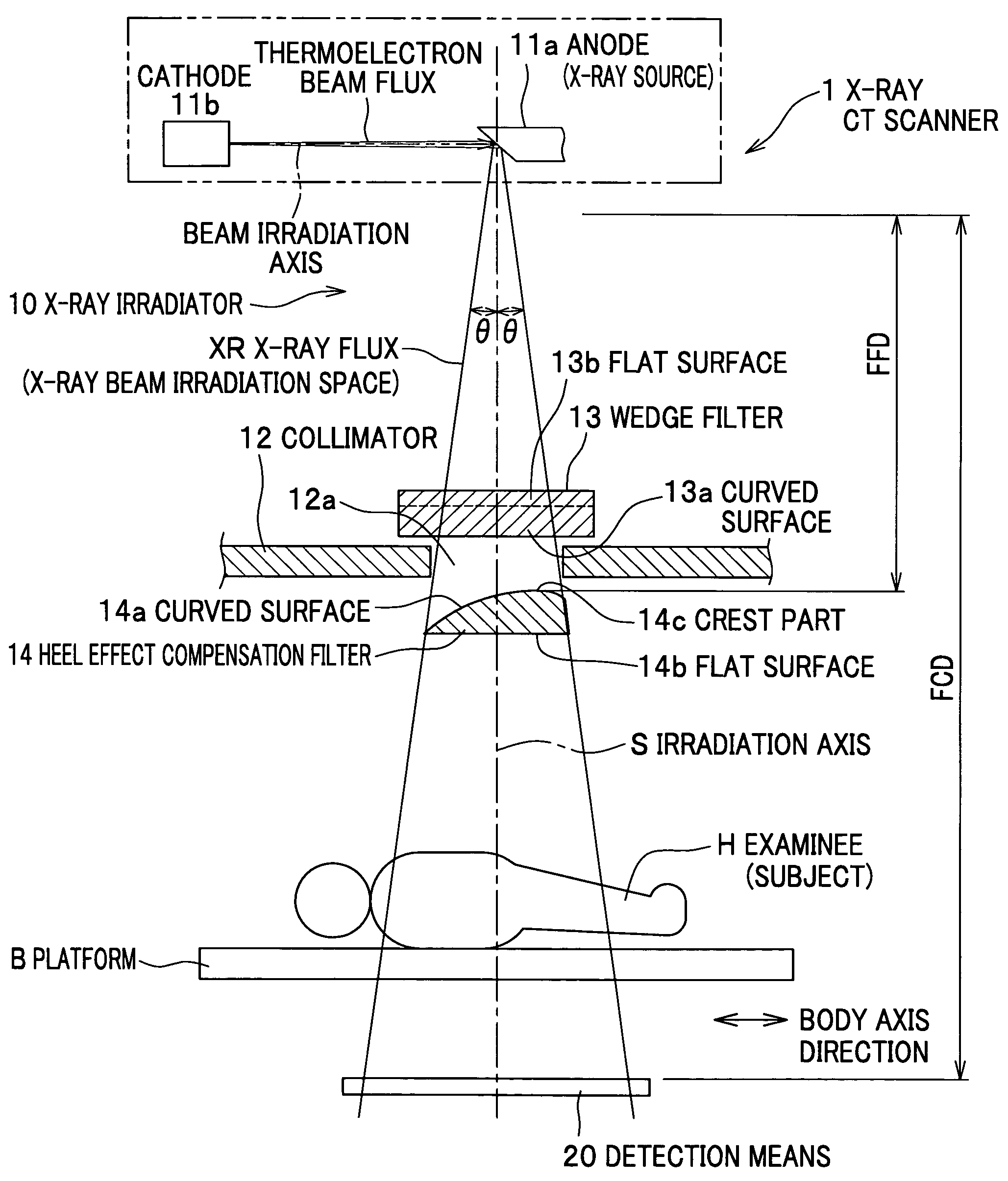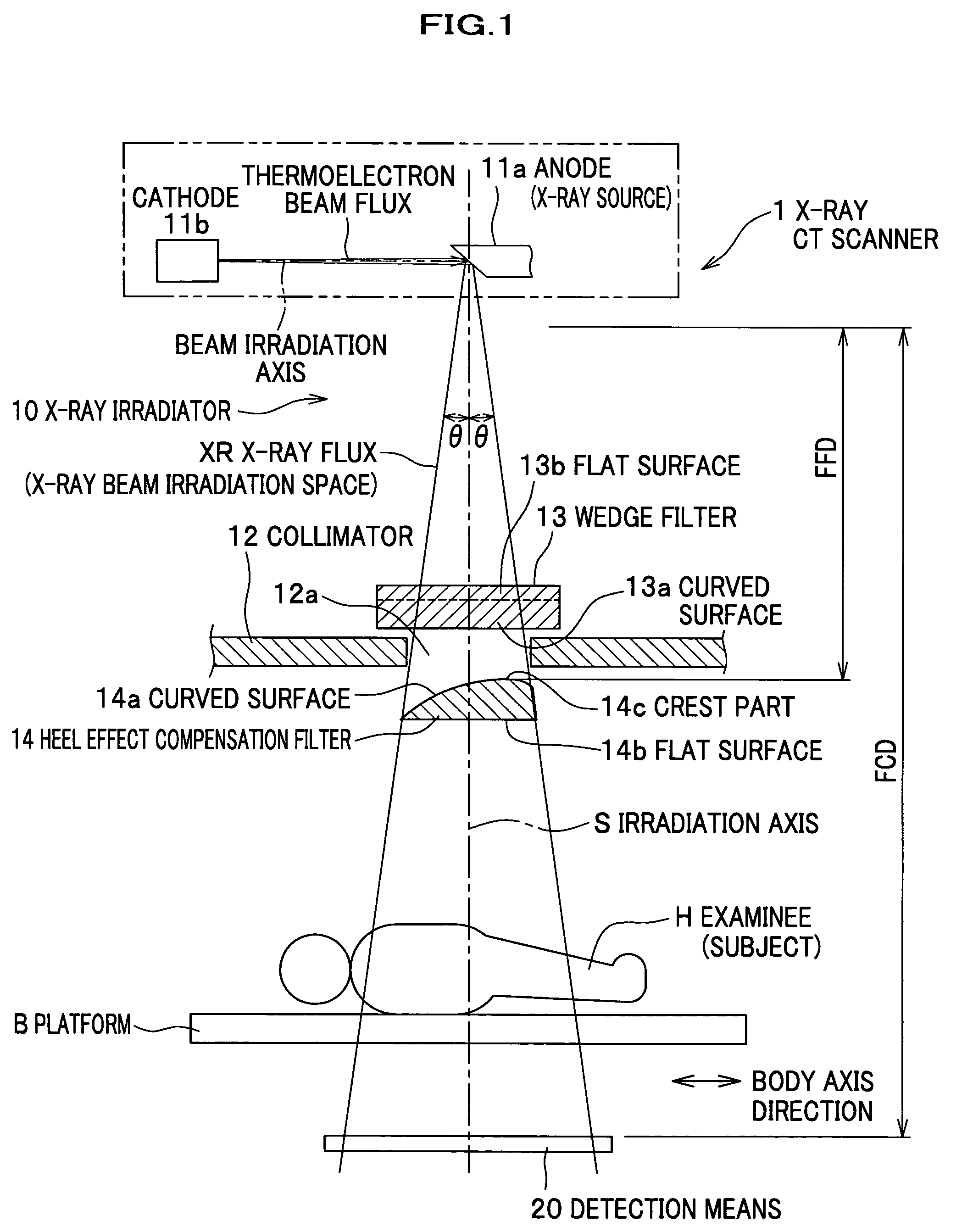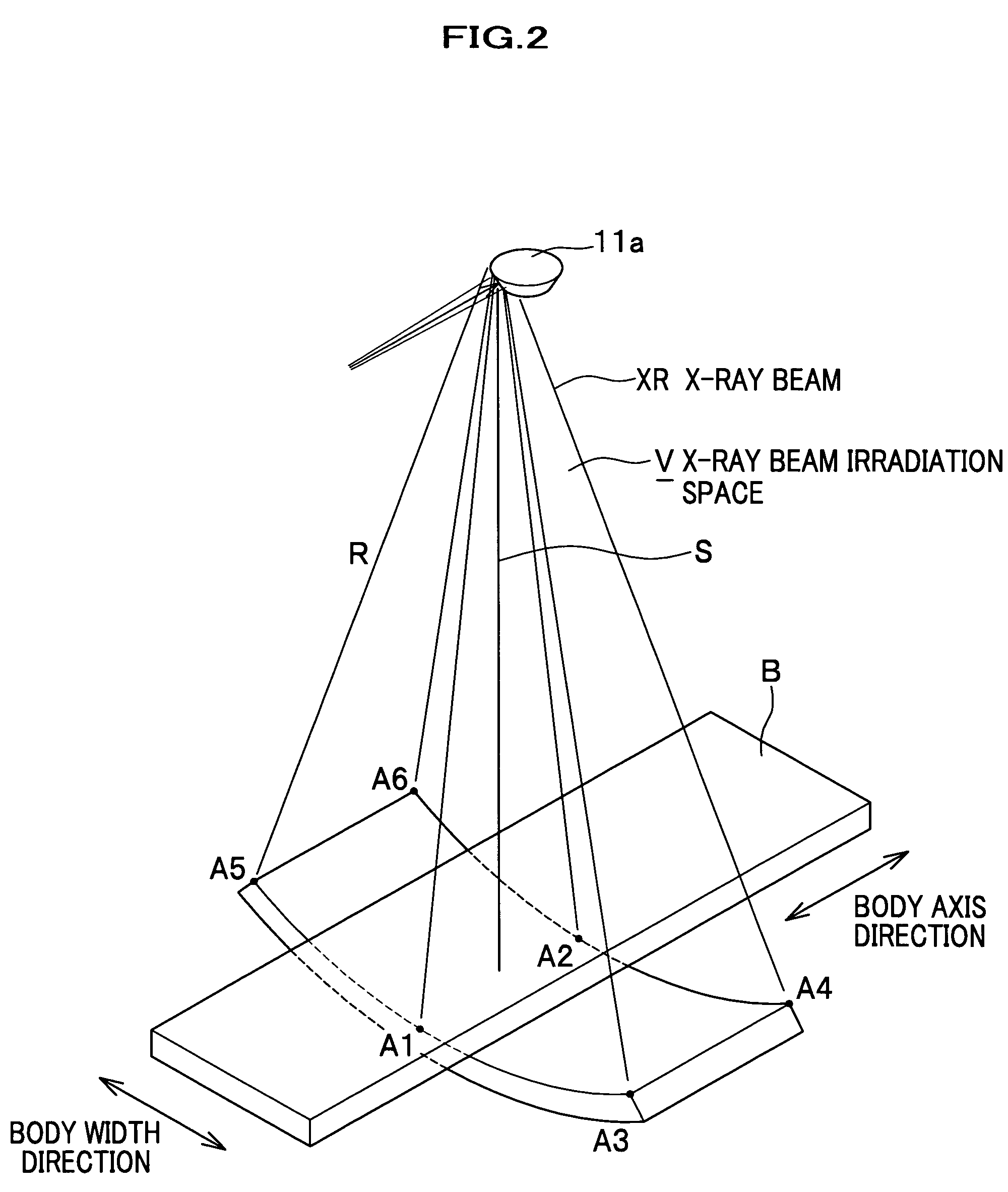Heel effect compensation filter X-ray irradiator, X-ray CT scanner and method for X-ray CT imaging
a filter and filter technology, applied in tomography, nuclear engineering, applications, etc., can solve the problems of overexposed body parts of examinees, excessive radiation amount, blurry slice data obtained by detecting the transmitted x-ray flux by the detector, etc., to achieve high effective energy, reduce unnecessary exposure of subjects, and achieve high effective energy
- Summary
- Abstract
- Description
- Claims
- Application Information
AI Technical Summary
Benefits of technology
Problems solved by technology
Method used
Image
Examples
first embodiment
[0086]FIG. 1 is a plan view diagrammatically showing one example of X-ray irradiator according to a first embodiment of the present invention. FIG. 2 is a diagram showing one example of an X-ray flux irradiated space of the irradiated X-ray flux. FIG. 3(a) is a perspective view showing one example of a heel effect compensation filter, and (b) is a perspective view showing one example of a wedge filter. FIG. 4(a) is a diagram showing a case where a heel effect compensation filter is not used, (b) is an X-ray intensity map showing a case where the heel effect compensation filter is not used, (c) is a diagram showing a case where the heel effect compensation filter is used, and (d) is a graph of an X-ray intensity angular distribution showing a case where the heel effect compensation filter is used. FIG. 5 is a diagram showing a positional relationship of signs to be used in a formula. FIG. 6(a) is a diagram showing a maximum value and a minimum value of an X-ray intensity, and (b) is ...
second embodiment
[0144]An X-ray CT scanner according to a second embodiment of the present invention is different from the first embodiment in that, with respect to the X-ray irradiator 10a, a flat surface 14b of the heel effect compensation filter 14 as an X-ray flux XR-incoming side transmissive surface is formed on an X-ray source 11a side, and that a cylindrical convex surface 14a as an X-ray flux XR-outgoing side transmissive surface is formed on an examinee H-side, as shown in FIG. 8(a).
[0145]When a flat surface 14b of the heel effect compensation filter 14 is disposed between the collimator 12 and the examinee H at a position proximate to the collimator 12 and at a predetermined distance FFD away from the X-ray source 11a, the X-ray intensity angular distribution of the X-ray flux XR becomes uniform at a predetermined distance FCD away from the X-ray source 11a, continuously along a body axis direction in the X-ray flux irradiated space V.
[0146]Even when the heel effect compensation filter 14...
third embodiment
[0147]An X-ray CT scanner according to a third embodiment of the present invention is different from the first embodiment in that, with respect to the X-ray irradiator 10b, a flat surface 14b of the heel effect compensation filter 14 as an X-ray flux XR-incoming side transmissive surface is formed on an X-ray source 11a side, and that a cylindrical convex surface 14a as an X-ray flux XR-outgoing side transmissive surface is formed on an examinee H-side, and that the heel effect compensation filter 14 is disposed between the wedge filter 13 positioned on an X-ray source 11a side and the collimator 12, as shown in FIG. 8(c).
[0148]Even when the heel effect compensation filter 14 is placed as explained above, like the first embodiment, as shown in FIG. 8(d), at a predetermined distance FCD from the X-ray source 11a (by the detection means 20), the X-ray intensity angular distribution of the X-ray flux XR can be made uniform, and the examinee H is prevented from being unnecessarily expos...
PUM
 Login to View More
Login to View More Abstract
Description
Claims
Application Information
 Login to View More
Login to View More - R&D
- Intellectual Property
- Life Sciences
- Materials
- Tech Scout
- Unparalleled Data Quality
- Higher Quality Content
- 60% Fewer Hallucinations
Browse by: Latest US Patents, China's latest patents, Technical Efficacy Thesaurus, Application Domain, Technology Topic, Popular Technical Reports.
© 2025 PatSnap. All rights reserved.Legal|Privacy policy|Modern Slavery Act Transparency Statement|Sitemap|About US| Contact US: help@patsnap.com



